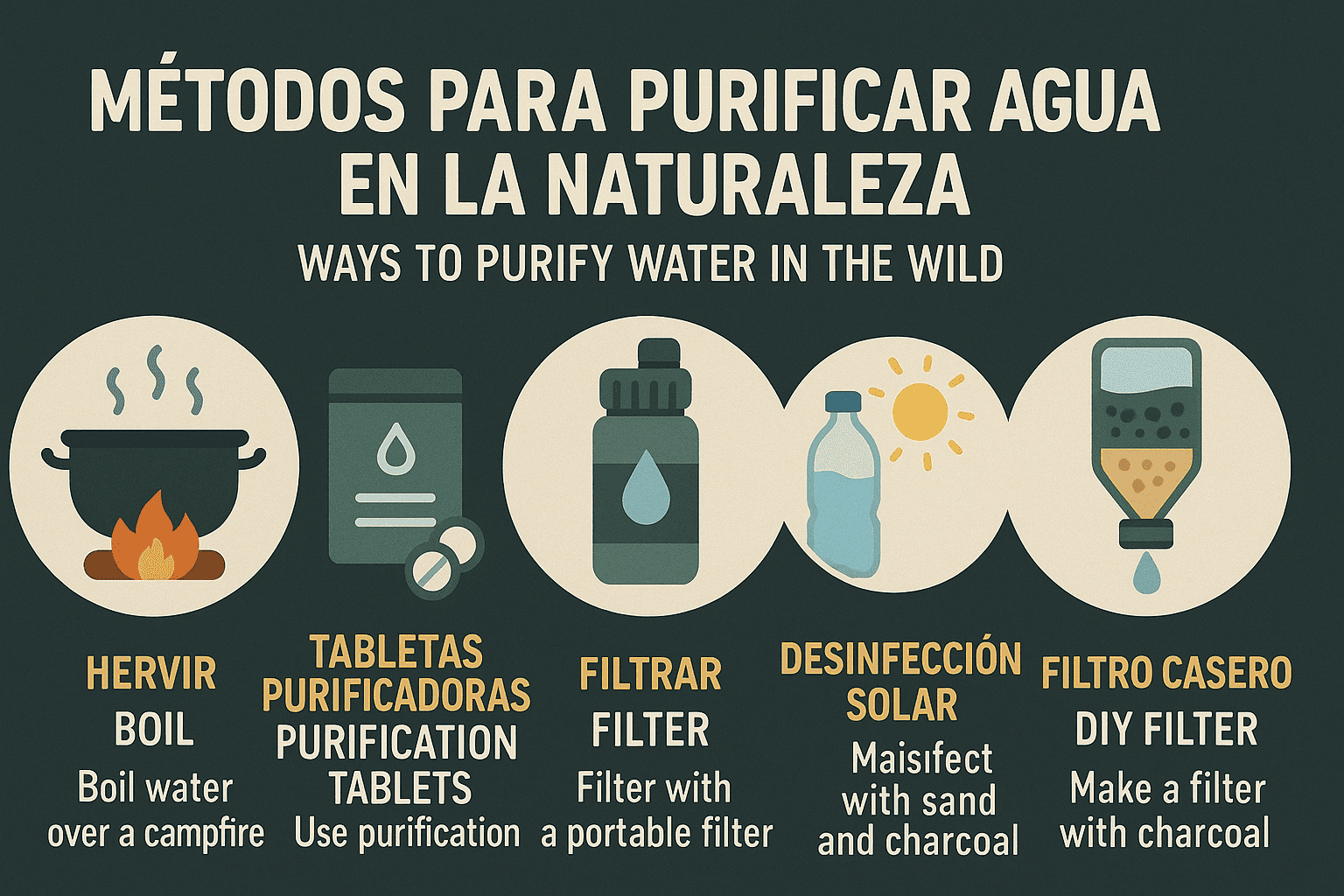Introduction
In an emergency, access to clean drinking water may be compromised. Floods, power outages, or supply disruptions can leave you without a safe water source. Knowing how to purify water can mean the difference between staying healthy and getting sick.
Effective methods for water purification
- Boiling: Bring water to a rolling boil for at least 1 minute (3 minutes at altitudes above 2,000 meters). This kills bacteria, viruses, and parasites.
- Purification tablets: Lightweight and portable, iodine or chlorine tablets eliminate most microorganisms. Always follow the manufacturer's instructions.
- Portable filters: Handheld filters remove bacteria and protozoa. Some advanced models also remove viruses.
- Ultraviolet (UV) light: Devices like the SteriPEN use UV rays to disinfect water in seconds.
- Solar disinfection (SODIS): Fill clear PET bottles, place them under direct sunlight for at least 6 hours (2 days if cloudy). UV radiation and heat destroy pathogens.
Important considerations
- If the water is cloudy, pre-filter it with a cloth or let sediments settle.
- Some methods do not remove chemical contaminants. If you suspect the water contains pesticides or heavy metals, seek an alternative source.
- Always keep at least one reliable purification method in your emergency kit.
Visual Resources

Conclusion
Having access to safe drinking water in an emergency is critical for survival. Knowing these methods and having the necessary tools can protect your health and your family's well-being in a critical situation.